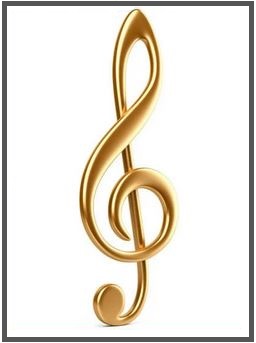 Classically-trained players are sometimes put-off because a piece of music or a chord chart has a mixture of sharps and flats. Of course, it’s bad form to randomly mix sharps and flats. But in modern music, there are sometimes reasons for using both sharps and flats in a chart.
Classically-trained players are sometimes put-off because a piece of music or a chord chart has a mixture of sharps and flats. Of course, it’s bad form to randomly mix sharps and flats. But in modern music, there are sometimes reasons for using both sharps and flats in a chart.
In classical music, when the key changes in the middle of a piece, it’s signaled by a change in the key signature. However, there are many popular modern songs with “two-five” key changes built into the chord progression, especially in jazz. Some jazz pieces are nothing but a series of seemingly random key changes, each one set up with a “two-five” change. In jazz, these key changes are not indicated by a change in the key signature.
Real Book charts like I’m All Smiles, Inside In, It Don’t Mean a Thing, As Time Goes By, and Deep Purple – all have chord symbols which use a mix of sharps and flats. The Real Book is fairly consistent about notating chromatic chord changes with, for example, F7 / F# dim / Gm rather than F7 / Gb dim / Gm, even if the melody is written in a flat key signature. Jazz players often pencil in key changes to help them remember which scales they can use for improvising over those sections.
It takes time to learn the note system well enough that sharps and flats are interchangeable. But you should make that your goal. It’s not as difficult as dealing with legal fictions like B# or F##, or “theoretical keys” like F-flat major.
© 2019, 2020 Greg Varhaug